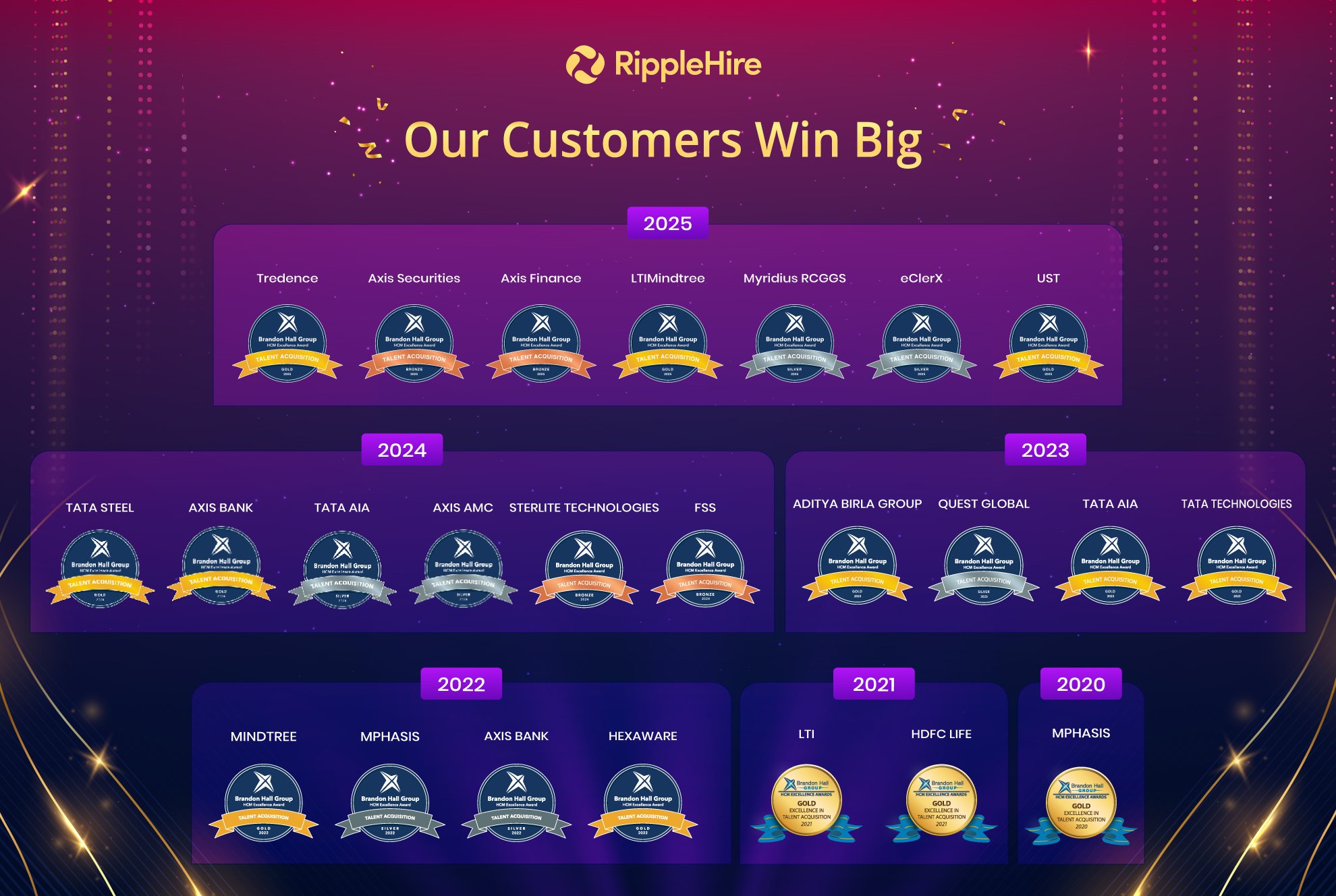4 Reasons Your Walk-In Drives Fail And How To Fix Them
Walk-in drives promise quick hiring but usually fail spectacularly. Companies end up with long queues of wrong candidates, chaos at the venue, and no actual hires by the end of the day.
The problem isn't the concept, it's the execution. Most organizations make the same four mistakes that turn hiring events into recruitment disasters.
Here's what goes wrong and how to fix it.
Your job ad attracted the completely wrong candidates
Most companies write generic job advertisements that sound appealing but miss crucial details about what the role actually involves.
For example, a sales position sounds great until candidates discover it requires 25 days of field travel per month. Customer service roles attract office workers who then learn they need to handle angry customers over phone calls for 8 hours straight.
The problem starts when HR teams want to attract maximum applications. They focus on benefits and growth opportunities while downplaying the challenging aspects of the job. This creates a mismatch between candidate expectations and reality.
When wrong candidates show up at walk-in drives, several things go wrong. Interview time gets wasted on people who will never accept the actual job requirements. Genuine candidates who could handle the role get discouraged by long queues filled with unsuitable applicants. Your recruitment team spends the entire day explaining why the job is different from what was advertised.
How to write job ads that attract the right candidates
Most companies write advertisements to attract maximum applications, thinking that more candidates equals better hiring outcomes. This strategy backfires during walk-in drives when you end up interviewing 200 people for 10 positions, with only 30 being genuinely suitable. The other 170 waste valuable interview time and create unnecessary crowd management issues.
Your job ad needs to act like a filter, not a magnet.
Be brutally honest about job requirements upfront. If the sales role requires extensive travel, mention specific days per month in the headline itself. If customer service involves handling complaints, state it clearly rather than using terms like "customer interaction."
Include deal-breakers in the first paragraph. Mention night shifts, weekend work, physical requirements, or travel expectations immediately. This filters out candidates who cannot meet these conditions.
Use specific job titles instead of generic ones. "Telecalling Executive - Outbound Sales Calls" is much clearer than "Sales Executive." Similarly, "Field Sales Representative - FMCG Distribution" attracts relevant candidates compared to just "Sales Representative."
Mention the work environment honestly. Office-based, factory floor, retail outlet, or field work - candidates need to know where they will actually be working. This simple step eliminates 70% of unsuitable applications.
Companies ignore crowd management until chaos hits
If 300 candidates arrive at your office lobby between 9-11 AM, half of them don't know where to go, and others are standing in the parking lot, it can be overwhelming for everyone. The reception area becomes a bottleneck, candidates start getting frustrated, and some simply walk away.
The real damage goes beyond the immediate chaos:
- Qualified candidates form negative impressions about your company's organizational skills
- Your employer brand takes a hit on social media and job portals
- Internal teams get stressed managing unexpected crowds
- Genuine candidates get lost in the mess and leave without interviewing
How to fix crowd management issues
The goal is to make candidates feel your company is well-organized and professional, not chaotic and unprepared. Here are some tips:
- Create a structured arrival system. Send candidates specific time slots instead of broad windows. Instead of "10 AM - 2 PM," assign "10:00-10:30 AM for candidates A-G" and so on.
- Set up clear signage and designated pathways. Your venue should have obvious directions from the main entrance to the registration area. Post signs, assign volunteers, and create separate queues for different roles.
- Prepare adequate seating and basic facilities. Candidates might wait 30-60 minutes even with good planning. Arrange chairs, water stations, and clean restrooms.
- Deploy enough staff for registration and coordination. One person cannot handle 200+ candidates. Assign specific team members for registration, document verification, and crowd guidance.
Companies don't make offers on the spot or within hours
Walk-in drives promise immediate hiring, but most companies can't deliver on this basic expectation. Candidates attend these events specifically to avoid lengthy recruitment processes and get hired quickly. When they leave without offers or clear timelines, the entire purpose gets defeated.
The typical scenario involves interviewers who can evaluate candidates but cannot make final decisions. They need approvals from senior management, HR heads, or budget controllers who aren't present during the drive. Candidates get told "we'll get back to you in 2-3 days" - the same timeline they'd get through regular applications.
What happens when offers get delayed:
- Good candidates accept other opportunities while waiting
- Your competition wins talent with immediate offers
- Candidates lose trust in your hiring promises
- Word spreads that your "walk-in drives" are just regular interviews
Some companies make it worse by asking candidates to come back for second rounds or salary negotiations. This completely destroys the walk-in drive concept.
Making offers within hours, not days
Senior decision-makers must be present during walk-in drives. This includes hiring managers, team leads, or whoever has final approval authority. Without them, you're running a screening session, not a hiring drive.
Pre-approved salary bands work better than negotiations.
Fix salary ranges for each role beforehand. Junior sales executive gets X amount, senior gets Y amount. No case-by-case discussions that delay decisions.
Create offer letter templates ready for immediate printing.
Standard terms, conditions, and joining dates should be pre-decided. Fill in candidate name, role, and salary - offer ready in 10 minutes.
The best walk-in drives end with candidates holding offer letters, not business cards with "we'll call you" promises.
Using regular hiring software for high-volume walk-in drives
Most companies try to manage walk-in drives using their existing ATS or recruitment software. These systems work fine for regular hiring, where you process 10-20 applications per week. During walk-in drives, you need to handle 200+ candidates in a single day, and regular systems simply break down.
Problems with using normal recruitment tools:
- Registration systems crash under heavy traffic
- Slow candidate search and filtering options
- No bulk processing capabilities for offers or rejections
- Interview feedback forms are designed for detailed reviews, not quick decisions
- No real-time candidate tracking across different stages
Many companies end up maintaining Excel sheets alongside their fancy ATS, defeating the purpose of having technology in the first place.
Use technology that is built for walk-in drives
High-volume recruitment needs specialized tools built for speed and scale. Quick registration systems that capture essential details in under 60 seconds. Bulk candidate processing that lets you move 50 people from "interviewed" to "selected" with a few clicks.
Key features for walk-in drive technology:
- Mobile-first registration forms for faster processing
- Real-time candidate status tracking is visible to all team members
- Bulk communication tools for sending offers or rejections simultaneously
- Integration with document verification and background check systems
- Instant offer letter generation with digital signatures
The right technology turns chaos into organized efficiency. Wrong technology makes manual processes look better by comparison.
Getting walk-in drives right requires the right partner
Walk-in drives don't have to be chaotic disasters. Companies like Axis Bank and TATA AIA run successful high-volume hiring events because they use technology built for enterprise-scale recruitment.
When Axis Bank needed to hire across multiple locations while maintaining their 4.8/5 candidate experience score, they didn't rely on basic ATS systems. TATA AIA's Talent Acquisition Head explains: "All stages of our hiring funnel are digitized and the entire candidate journey happens through the system."
The difference is having platforms designed for high-velocity hiring that handle hundreds of candidates without breaking down. Real-time candidate tracking, instant offer generation, and fraud detection become standard features rather than impossible dreams.
Companies across 50+ countries have solved these walk-in drive challenges using RippleHire's high-performance ATS. Whether you're hiring 50 people or 500, the platform scales while maintaining candidate experience.
Want to see how leading enterprises run successful walk-in drives? Let's talk.
Frequently Asked Questions
-
What are the most common mistakes that cause walk-in drives to fail?
The four biggest mistakes include poor venue planning that creates crowd chaos, inadequate staffing for the expected volume, unclear communication about requirements and process, and a lack of proper screening criteria that leads to hiring the wrong candidates.
Most companies underestimate the logistics involved and treat walk-in drives like regular recruitment, which creates disasters when hundreds of candidates show up unprepared.
-
How can we avoid crowd management issues during walk-in drives?
Choose venues with multiple entry/exit points and adequate waiting areas. Create clear signage directing candidates through different stages and assign staff members as crowd controllers at key points.
Send detailed instructions beforehand about reporting times, required documents, and what to expect. Stagger arrival times across different time slots rather than having everyone arrive at once to prevent overwhelming bottlenecks.
-
What staffing levels do successful walk-in drives require?
Plan for much higher staffing than regular recruitment. You need dedicated roles, including registration coordinators, screening specialists, interview panel members, and crowd management staff.
A good rule is one staff member for every 15-20 candidates expected. Don't pull people from regular work on the day of the drive - they need to be dedicated and properly briefed on their specific responsibilities.
-
How do we communicate effectively with walk-in drive candidates?
Provide crystal clear information about eligibility criteria, required documents, dress code, and process timeline before the event. Use multiple channels, including social media, job boards, and local newspapers.
Send reminder messages 24 hours before the drive with specific reporting instructions. During the event, use loudspeakers or display boards to keep everyone informed about wait times and next steps.
-
What screening criteria work best for walk-in recruitment?
Develop simple pass/fail criteria that can be applied quickly and consistently. Focus on must-have requirements like experience level, specific skills, and availability rather than nice-to-have qualities.
Create standardized evaluation forms that interviewers can complete in 10-15 minutes per candidate. Train your team on these criteria beforehand so everyone evaluates candidates using the same standards.
-
How long should a successful walk-in drive take?
Plan for full-day events, typically 6-8 hours, with structured time blocks for different activities. Allow 15-20 minutes per candidate for initial screening and 20-30 minutes for final interviews.
Build in buffer time between sessions and have backup plans for when things run late. The most successful drives finish on schedule because they were planned with realistic timelines from the start.
-
What follow-up is needed after walk-in drives?
Communicate results within 48-72 hours maximum while the event is still fresh in candidates' minds. Send personalized messages to selected candidates with next steps and clear timelines.
For unsuccessful candidates, send polite rejection messages and consider adding promising ones to your talent database for future opportunities. Quick follow-up maintains your company's reputation and keeps candidates engaged with your brand.
















